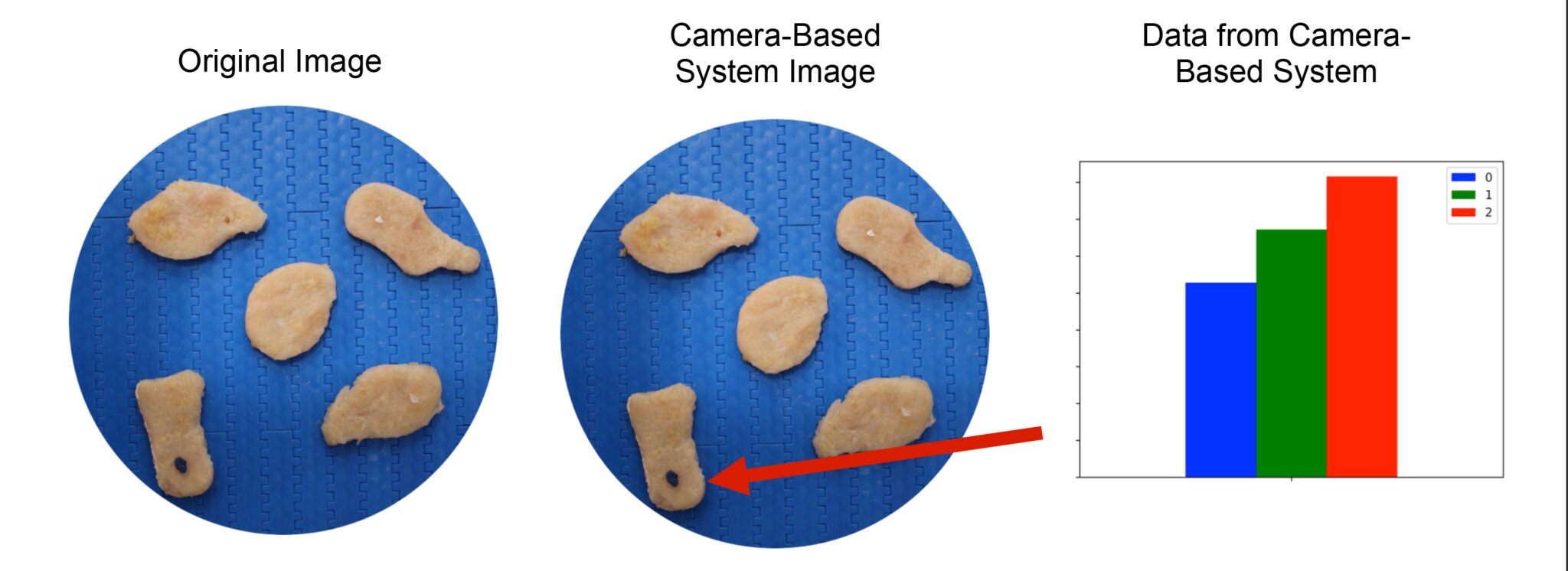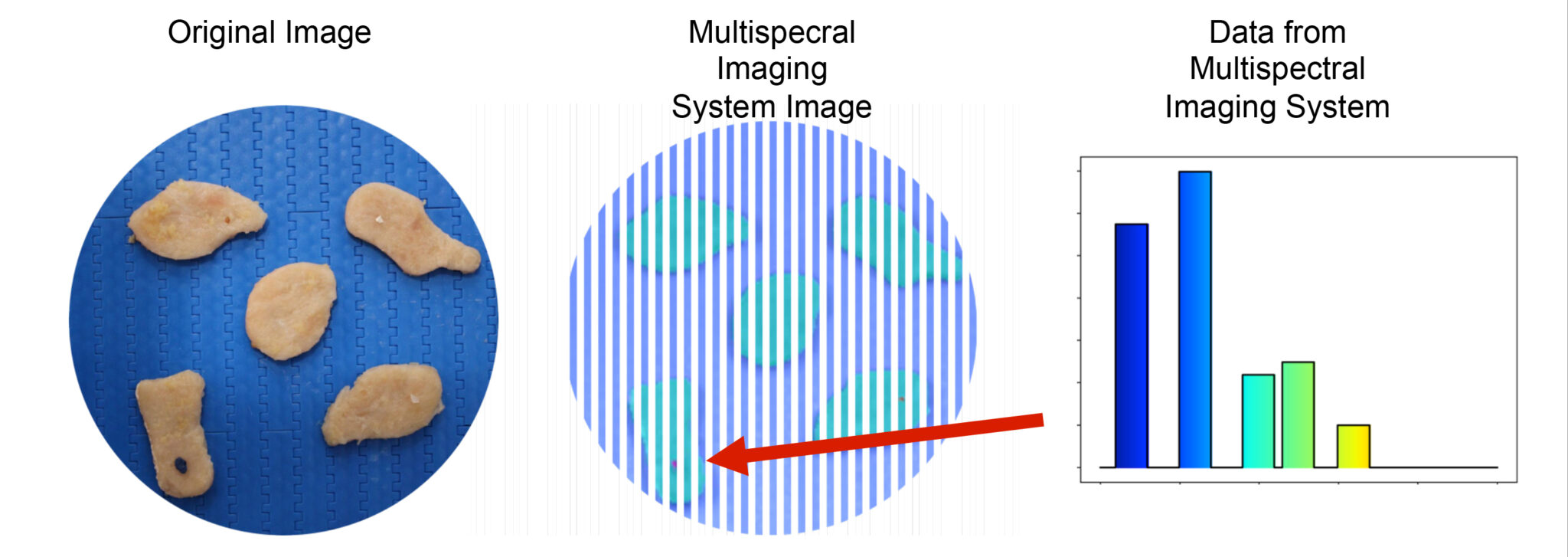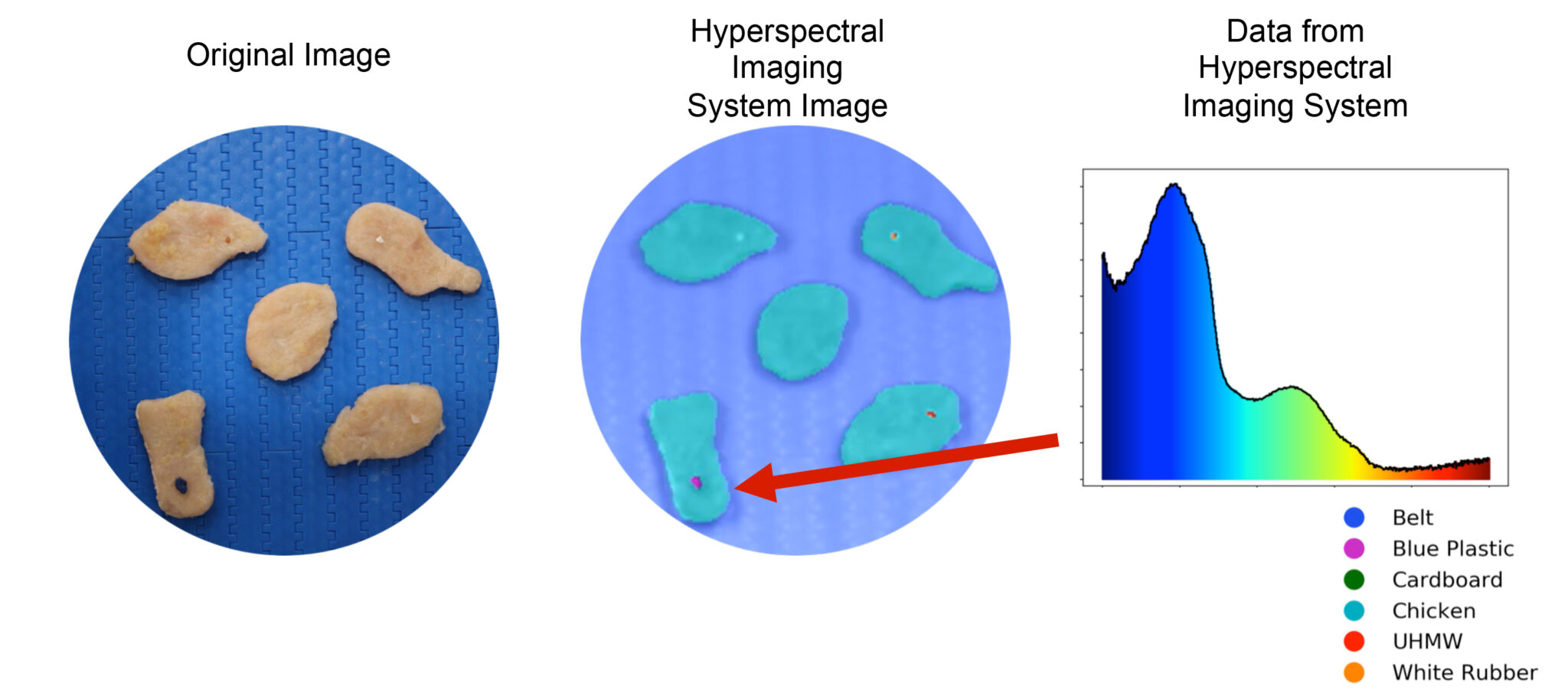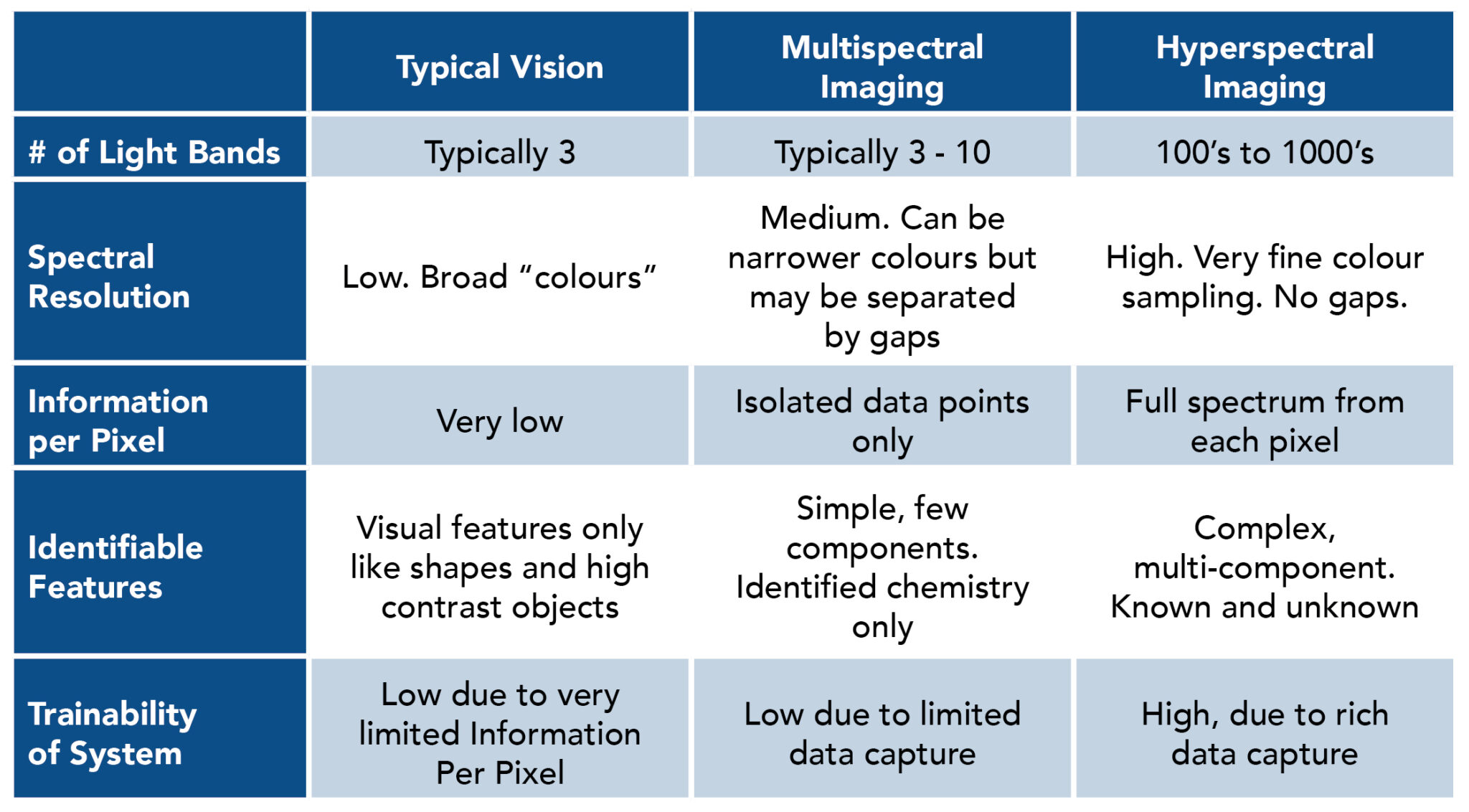Did you know that there are over 1600 Google searches each month for the term “Vision Systems”?
When we visit our clients, we hear a lot of discussions about vision systems in food processing. But “vision systems” is an umbrella term that can include many different technologies. And those technologies offer very different things to a food processor. These technologies are also evolving quickly, making it even more difficult to understand and compare the available options.
This article offers a perspective on the different types of vision systems that can be used in a food processing plant. It might be helpful to review our post on spectroscopy as well.
To compare different types of vision systems, we’re going to consider a few different things:
- The number of light bands (wavelengths, or colours) each system uses
- The spectral resolution (how small the differences are between each colour or wavelength)
- The amount of information that’s gathered by each type of system
- The identifiable features of a product that each system can understand and differentiate
- How much the system can “learn” over time, using the data that’s gathered
Let’s take a look at the different options available to food processors today.
Camera-Based Inspection Systems
This is what many people have traditionally considered a “vision system”. In general, a camera is quite similar to the human eye, both in how it works and what it can detect. But unlike the human eye, which sees in 3D, a camera-based system will produce a 2D image.
A typical camera-based system will use 3 colours (red, green and blue) in the visible spectrum (colours that can be seen by the human eye). These systems usually use wavelengths between 400 and 700 nm (nanometers. 
Camera systems can be quite useful if you’re measuring size or assessing form. However, clear plastics or other contaminants that are similar in colour to the product they’re found on, can be very difficult or impossible for a traditional camera-based system to detect.
Multispectral Inspection Systems
Multispectral systems have an advantage over traditional camera-based systems in that they can use finer wavelengths of light, giving them spectral resolution than those camera-based systems.
Multispectral systems have the advantage that they offer better spectral resolution (can see finer differences in colour), and typically see more colours, than traditional camera-based systems. They also may use wavelengths of light that are outside the visible spectrum
Both of these characteristics mean that multispectral systems can see and identify some chemical properties of the product being inspected. However, this inspection capability is “spot sampling”: multispectral systems base their inspections on a limited number of identified wavelengths. Those wavelengths are chosen based on the materials that the inspection system is designed to find.
Multispectral systems are also limited in their ability to adapt (or “learn”) over time, because the data that’s captured by these systems is limited to those chosen wavelengths.
Multispectral systems can be useful for finding foreign materials where the contaminants are well known and consistent. Multispectral systems can also be useful for assessing some “known” chemical properties of products.
Here’s an example of what a multispectral system sees as it’s inspecting a product:

Hyperspectral Imaging
Hyperspectral imaging uses hundreds or even thousands of spectra. That means the data that’s captured is very robust, and can provide rich analysis of the chemistry of a product. It also means that hyperspectral imaging allows more complete inspection of a product than either the camera-based or multispectral systems.
Hyperspectral imaging systems like PPO’s Smart Imaging System can use the data that’s collected to “learn” over time, improving the accuracy and effectiveness of the inspection.
Hyperspectral imaging systems are the best option for finding foreign materials when the contaminant types aren’t consistent or well known, and when they’re hard to see (for instance, clear plastic). Hyperspectral imaging systems are also the only option for accurately and consistently evaluating chemical properties of food (such as composition, woody breast issues, tenderness or freshness).
Here’s an example of what a hyperspectral system such as PPO’s Smart Imaging System sees as it’s inspecting a product:

Smart Imaging at PPO
PPO’s Smart Imaging System uses hyperspectral imaging in a unique way. We separately consider each pixel of information we gather. That means we use all the colours in that pixel to determine exactly what material we’re looking at. And we make decisions about each unique pixel separately. Then we can combine the information about each pixel together to get even better data – and even better results.
Unlike some other hyperspectral imaging solutions for the food industry, PPO’s Smart Imaging System is designed to operate at line speed, in the plant. It’s also fully wash-down ready, and prepared for the harsh conditions found in food processing environments.
Need a Summary?
Here’s a quick reference chart that summarizes all of the information we shared in this article. We hope it’s helpful!

Ready to see how PPO’s Smart Imaging System can help improve food quality and safety in your plant? Get in touch with us today.